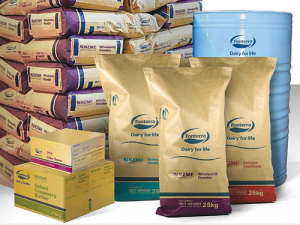When will global milk production hit a tipping point?
With global milk prices falling, the question is when will key exporting countries reach a tipping point where production starts to dip.
 Global Dairy Trade (GDT) auctions have traded more than US$22 billion worth of products over the last 10 years.
Global Dairy Trade (GDT) auctions have traded more than US$22 billion worth of products over the last 10 years.
GDT Events auctions rewrote the rules of engagement for buying and selling dairy commodities, says Eric Hansen, director Global Dairy Trade.
In the last 10 years to the end of June this year Global Dairy Trade has facilitated the trading of at least US$22 billion cumulative value of dairy products to buyers from 80 countries.
It held its first online auction ten years ago on the GDT Events platform, aiming to be the most credible and comprehensive maker of prices for core dairy ingredients.
“In the era before Global Dairy Trade existed, buyers and sellers were struggling to understand what constituted a current market price in the midst of unprecedented volatility,” he says.
“Dairy farmers had limited access to information about what the milk in their vats was worth in international markets.
“By applying advanced auction methods to create a new sales channel for globally traded commodity dairy products, Global Dairy Trade’s auctions provided assurance to buyers that they were paying a fair market price.
“Buyers and sellers were able to better manage price risk. And farmers had a regular market-based price signal on which they could plan their farming businesses.”
The transparent, market-based pricing Global Dairy Trade provides now has wide market interest and acceptance and furnishes the references prices on which financial risk management tools are built.
In the early days, however, the Global Dairy Trade development team was hard-pressed to prove that an online dairy auction platform would work in practice, says Hansen.
“We started with a team of three people, selling just one product each month -- whole milk powder.
“We launched at a challenging time. Our first auction on July 2, 2008 delivered prices in the mid-range of expectations. Not long after that, the global economy went into freefall. As the global financial crisis took hold, dairy prices crashed and they kept falling until February 2009.
“Then the recovery started. The result achieved in the first trading event provided proof of concept; we just had to hold on until the market hit bottom and turned.
“We kept the monthly sales going and GDT Events provided price discovery in a world of huge uncertainty.”
Over time, more sellers joined GDT Events which is now a trusted and transparent platform for high-volume, high-quality generic dairy ingredients.
The National Wild Goat Hunting Competition has removed 33,418 wild goats over the past three years.
New Zealand needs a new healthcare model to address rising rates of obesity in rural communities, with the current system leaving many patients unable to access effective treatment or long-term support, warn GPs.
Southland farmers are being urged to put safety first, following a spike in tip offs about risky handling of wind-damaged trees
Third-generation Ashburton dairy farmers TJ and Mark Stewart are no strangers to adapting and evolving.
When American retail giant Cosco came to audit Open Country Dairy’s new butter plant at the Waharoa site and give the green light to supply their American stores, they allowed themselves a week for the exercise.
Fonterra chair Peter McBride says the divestment of Mainland Group is their last significant asset sale and signals the end of structural changes.
President Donald Trump’s decision to impose tariffs on imports into the US is doing good things for global trade, according…
Seen a giant cheese roll rolling along Southland’s roads?